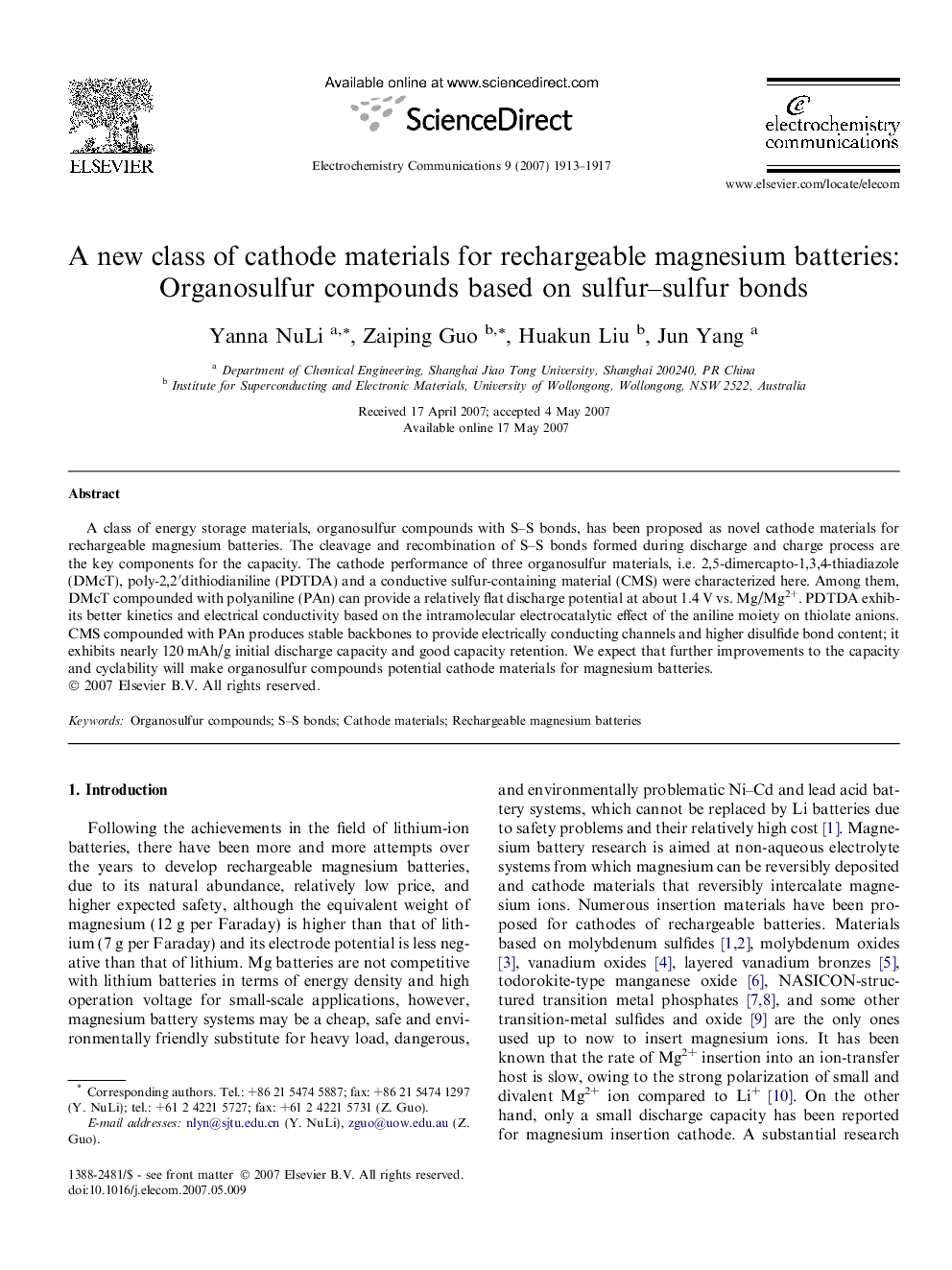| Article ID | Journal | Published Year | Pages | File Type |
|---|---|---|---|---|
| 181745 | Electrochemistry Communications | 2007 | 5 Pages |
A class of energy storage materials, organosulfur compounds with S–S bonds, has been proposed as novel cathode materials for rechargeable magnesium batteries. The cleavage and recombination of S–S bonds formed during discharge and charge process are the key components for the capacity. The cathode performance of three organosulfur materials, i.e. 2,5-dimercapto-1,3,4-thiadiazole (DMcT), poly-2,2′dithiodianiline (PDTDA) and a conductive sulfur-containing material (CMS) were characterized here. Among them, DMcT compounded with polyaniline (PAn) can provide a relatively flat discharge potential at about 1.4 V vs. Mg/Mg2+. PDTDA exhibits better kinetics and electrical conductivity based on the intramolecular electrocatalytic effect of the aniline moiety on thiolate anions. CMS compounded with PAn produces stable backbones to provide electrically conducting channels and higher disulfide bond content; it exhibits nearly 120 mAh/g initial discharge capacity and good capacity retention. We expect that further improvements to the capacity and cyclability will make organosulfur compounds potential cathode materials for magnesium batteries.
